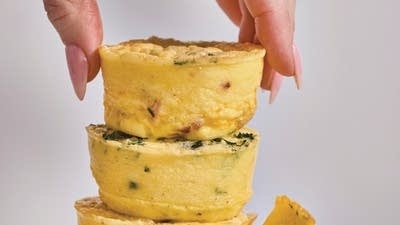
Forget buying tomato plants at the nursery. Instead, grow tomatoes from the seeds you save.
1. Choose the tomatoes carefully.
 Joseph Tychonievich
Photo: Carmille Bales-Arcello
Joseph Tychonievich
Photo: Carmille Bales-Arcello
Use open-pollinated varieties or heirlooms instead of hybrids -- their seeds will bear fruit similar to that of the parent plant. You can save seeds from a hybrid, but the resulting plants might be different. Find tomato varieties from other gardeners who save seeds, Internet trading forums or specialized seed companies.
"Take the seeds from the most delicious plant," says Joseph Tychonievich, author of Plant Breeding for the Home Gardener and creator of the Lynne Rossetto Kasper tomato. "Of all the ones you have, whichever has the best fruit, that's the one you want to save seeds from because that is going to give you the best babies."
Select the best fruit from that plant -- skip tomatoes that are over- or underripe or misshapen.
2. Deslime the seeds.
Cut the tomato in half widthwise. Tychonievich says: "Squirt out the seeds that are suspended in slime. Put that in a cup of water and let that sit in water at room temperature for 3-4 days. It will start to ferment, which will actually break down that slime."
The slime that Tychonievich mentions inhibits germination. As the mixture ferments and the slime breaks down, the seeds will sink to the bottom and mold may form on the top.
3. Dry the seeds.
Pour off the water, fermented slime, mold and any floating seeds. Tychonievich prefers to put the seeds on a regular sheet of paper so they can dry (you can also try coffee filters or paper plates). Don't use a paper towel -- the seeds will stick, making it difficult to remove them.
4. Store the seeds.
Label your seeds with the tomato variety and date you collected them, and put them in an airtight container. You can use silica gel (sold at craft stores) or powdered milk to help keep the seeds dry -- wrap a small amount in cheesecloth and store it in the container with the seeds.
Store them at a temperature between 32-41 degrees Fahrenheit. "I would store them in the refrigerator," Tychonievich says. "You can freeze them, but they have to be really dry or they will be damaged by the freezing temperatures. The refrigerator is best."
5. Grow tomato plants.
When stored correctly, tomato seeds can last for several years. If you have stored them in the refrigerator or freezer, let them come to room temperature before opening the container.
Before you go...
Each week, The Splendid Table brings you stories that expand your world view, inspire you to try something new, and show how food connects us all. We rely on your generous support. For as little as $5 a month, you can have a lasting impact on The Splendid Table. And, when you donate, you’ll join a community of like-minded individuals who love good food, good conversation, and kitchen companionship. Show your love for The Splendid Table with a gift today.
Thank you for your support.
Donate today for as little as $5.00 a month. Your gift only takes a few minutes and has a lasting impact on The Splendid Table and you'll be welcomed into The Splendid Table Co-op.



